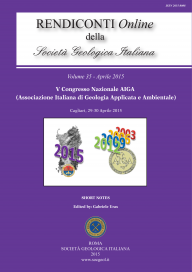
Application of Infrared Thermography for landslide mapping: the Rotolon DSGDS case study
William Frodella (a), Francesco Fidolini (a), Stefano Morelli (a) & Veronica Pazzi (a)
(a) Department of Earth Sciences , University of Florence. Via G. La Pira 4, 50121, Firenze, Italy. E-mail: william.frodella@unifi.it
DOI: https://doi.org/10.3301/ROL.2015.85
Volume: 35/2015
Pages: 144-147
Abstract
On November 4th 2010, after several days of intense rainfall, a huge mass (about 225000 m3) detached from the debris cover of the Rotolon landslide, converging within the Rotolon Creek river bed, and evolving into a mobile debris flow that damaged various infrastructures, putting on high risk three villages located along the creek banks. After this event the National Department of Civil Protection (DPC) appointed the Earth Sciences Department of the Firenze University (DST-UNIFI) to start a ground based interferometric radar (GBInSAR) monitoring activity, in order to support the local authorities for the emergency management by analyzing the landslide displacements and evaluating the residual risk. During this phase accurate geomorphological and infrared thermographic (IRT) surveys were also carried out, in order to study the landslide morphological features, with the aim of improving the radar displacement data interpretation.
Keywords
Get Full Text